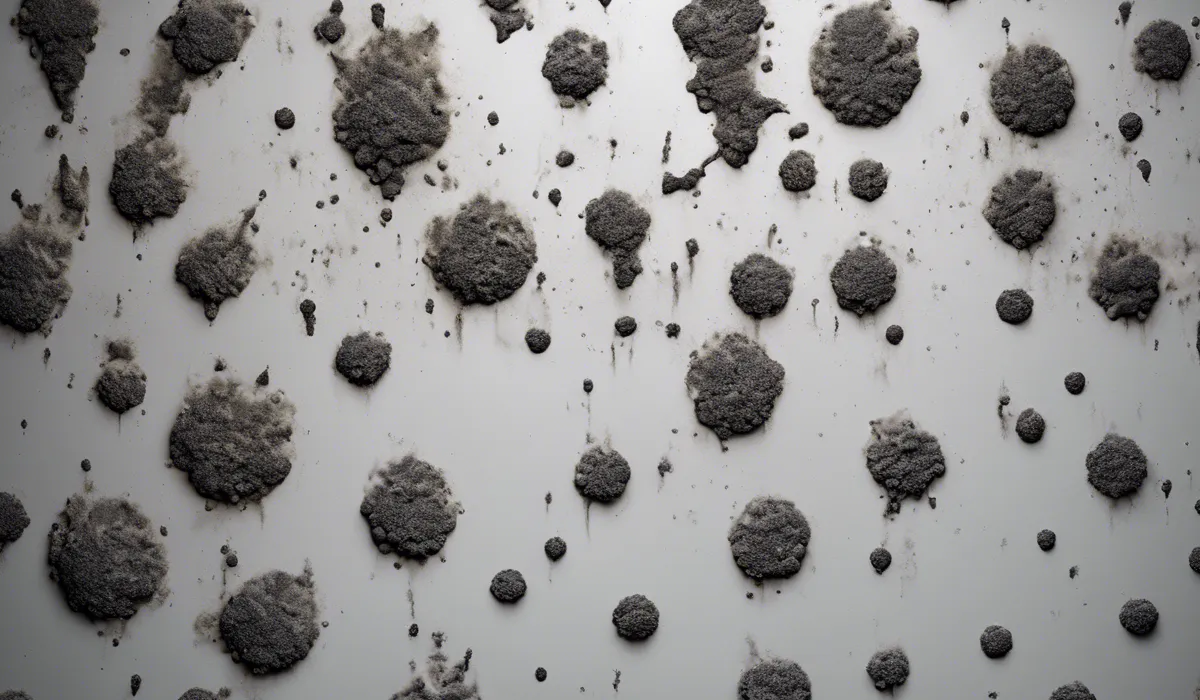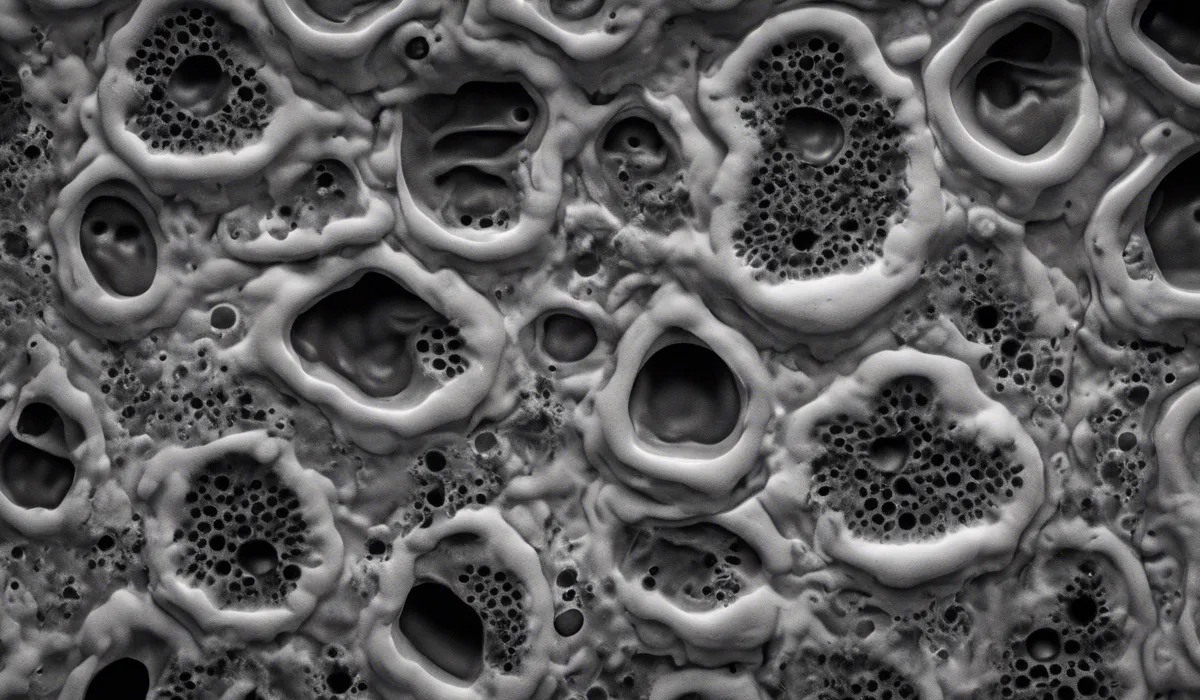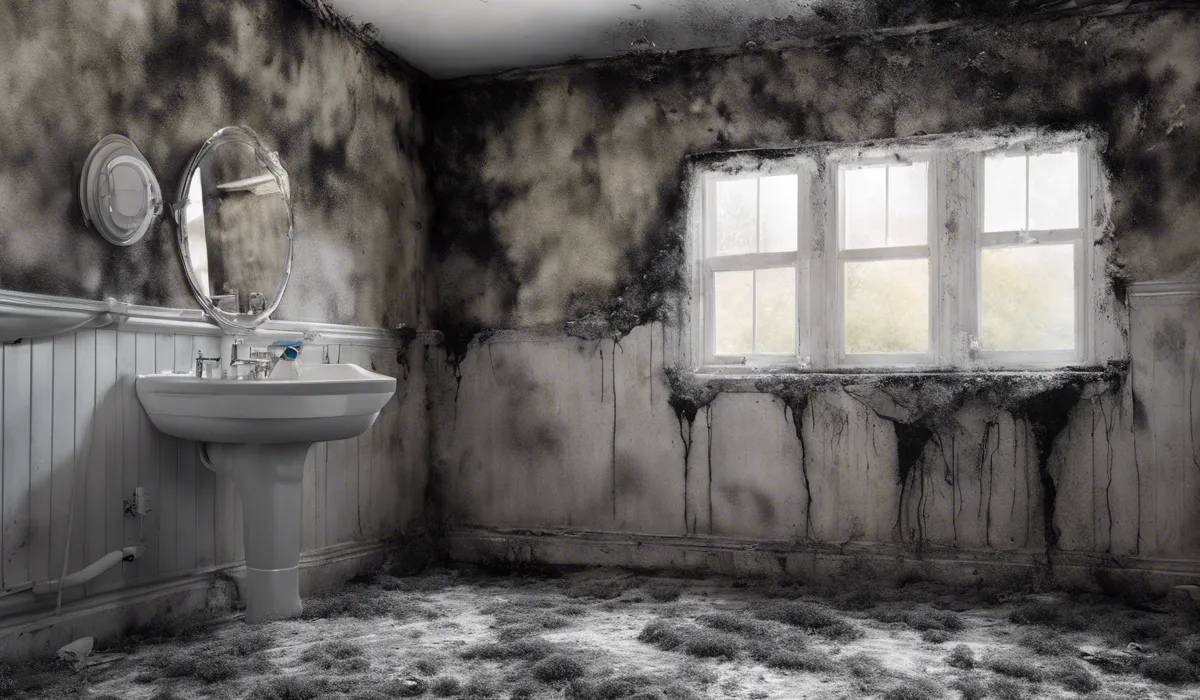Black mold refers to Stachybotrys chartarum, a toxic mold species with a dark appearance. It thrives in moist, water-damaged environments and can cause health issues if inhaled. Identification typically requires professional assessment.
Understanding Black Mold

Definition of Mold
Mold is a type of fungus that grows in the form of multicellular filaments called hyphae. These tiny organisms are essential parts of nature, breaking down dead organic material and recycling nutrients in the ecosystem.
However, when mold grows indoors, it can become a problem.
Description of Black Mold
Black mold, scientifically known as Stachybotrys chartarum, is a greenish-black mold that can grow on materials with a high cellulose content, such as drywall, carpet, wallpaper, and insulation, when these materials become water-damaged.
This mold is infamous due to its association with various health problems.
Misconceptions About Black Mold and Color
It is a common misconception that all black-colored molds are the toxic Stachybotrys chartarum.
In reality, mold comes in a variety of colors and not all black molds are toxic. It is the species and the presence of mycotoxins that determine the health risks, not the color.
Conditions for Black Mold Growth
Black mold thrives in moist, humid, and poorly ventilated environments. It typically grows in areas that have been subject to water damage from leaks, floods, or high humidity.
Materials that remain wet for 24 to 48 hours can provide a suitable breeding ground for this mold.
Health Implications of Black Mold

Common Symptoms Associated with Black Mold Exposure
Individuals exposed to black mold may experience a variety of symptoms. These can include nasal stuffiness, throat irritation, coughing or wheezing, eye irritation, or, in some cases, skin irritation.
Those with mold allergies may have more severe reactions, and immune-compromised people and those with chronic lung illnesses may get serious infections in their lungs when exposed.
Long-term Health Risks
Extended exposure to black mold may lead to more serious health issues. These can range from persistent headaches and fatigue to depression and memory loss.
It’s crucial to address mold problems quickly to minimize these long-term health risks.
Vulnerable Populations
Certain individuals are more susceptible to the effects of black mold. This includes infants, elderly people, those with respiratory conditions like asthma, and those with compromised immune systems.
For these groups, black mold exposure can be particularly harmful.
Mycotoxins and Their Effects on Health
Mycotoxins are toxic substances produced by certain molds, including black mold.
These toxins can lead to neurological problems and can even be life-threatening when exposure is high. Minimizing exposure to these toxins is critical for maintaining good health.
Prevention and Remediation

Tips for Preventing Mold Growth in Homes and Buildings
Preventing mold growth involves controlling moisture levels in your home. Use dehumidifiers, ensure good ventilation, and fix leaks promptly.
Regularly cleaning and maintaining your home can also prevent mold from taking hold.
Importance of Moisture Control
Maintaining a dry environment is crucial to prevent mold growth. Moisture control is the key to mold control.
It is important to quickly repair any water problems, such as leaks in roofs, walls, or plumbing, and to dry all items completely.
Steps for Identifying Mold Infestations
Identifying a mold problem involves looking for visible signs of mold growth, which may appear as speckled staining or discoloration on surfaces.
An earthy or musty odor can also indicate a mold issue. It is often necessary to look behind and underneath surfaces, such as carpets, wallpaper, cabinets, and walls.
Professional Remediation vs. DIY Removal
While small mold problems can sometimes be handled on your own, larger infestations should be dealt with by professionals.
They have the proper equipment and expertise to safely remove mold and prevent its return.
Safe Cleaning Practices and Protective Gear
If you decide to tackle mold removal yourself, it is important to wear the right protective gear. This includes gloves, goggles, and an N-95 respirator.
It is also important to isolate the area to prevent the spread of mold spores to other parts of the building.
FAQs About Black Mold
What exactly is black mold?
Black mold is the common name for Stachybotrys chartarum, a type of toxic mold that has a dark green or black appearance and can cause health problems if inhaled.
Where does black mold typically grow?
Black mold grows in moist, water-damaged environments, often where there is poor ventilation or chronic humidity.
Is it safe to stay in a room with black mold?
No, it is not safe to stay in a room with black mold as it can cause health issues, especially respiratory problems, in individuals exposed to it.
How can I tell if mold is black mold?
Identification of black mold typically requires a professional assessment, as it can be difficult to distinguish from other mold species without expert analysis.
What should I do if I find black mold in my home?
If you find black mold in your home, you should contact a professional mold remediation specialist to safely remove it and address the moisture source that allowed it to grow.
Final Thoughts
Black mold, scientifically known as Stachybotrys chartarum, is a harmful mold species recognized by its dark coloration.
It proliferates in damp areas with water damage and poses health risks upon inhalation. Accurate identification of this mold typically necessitates expertise from professionals in the field.
